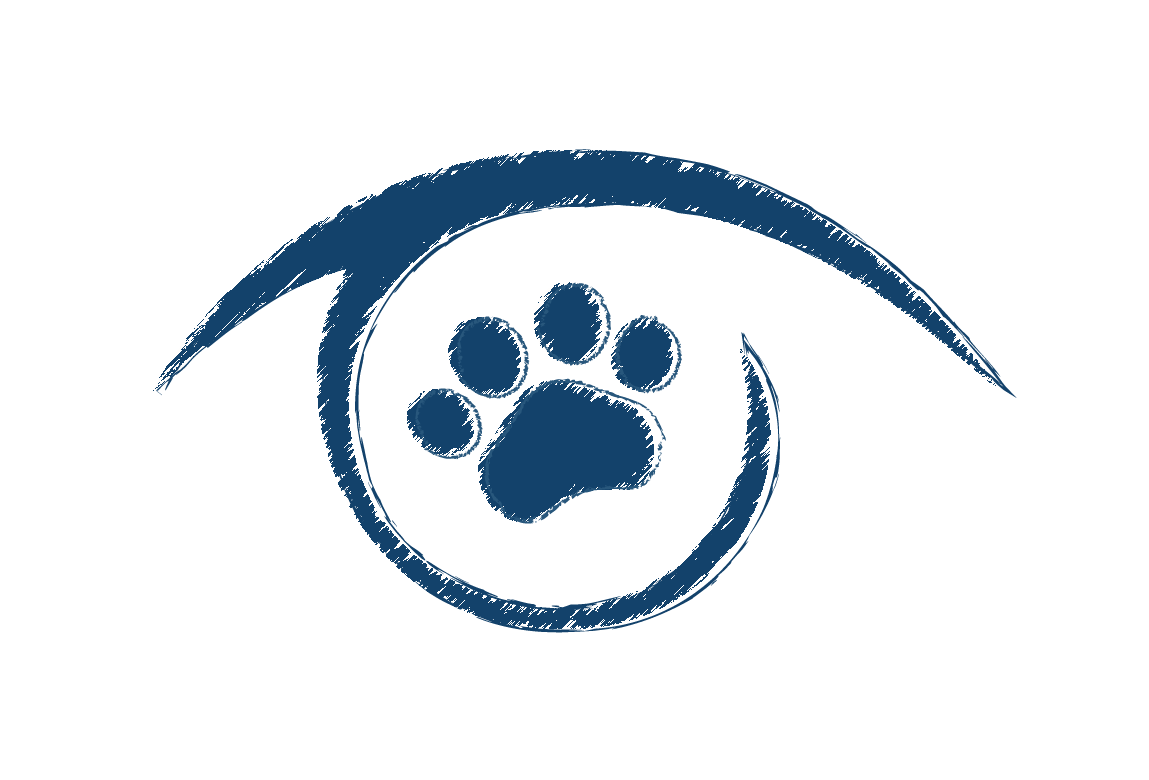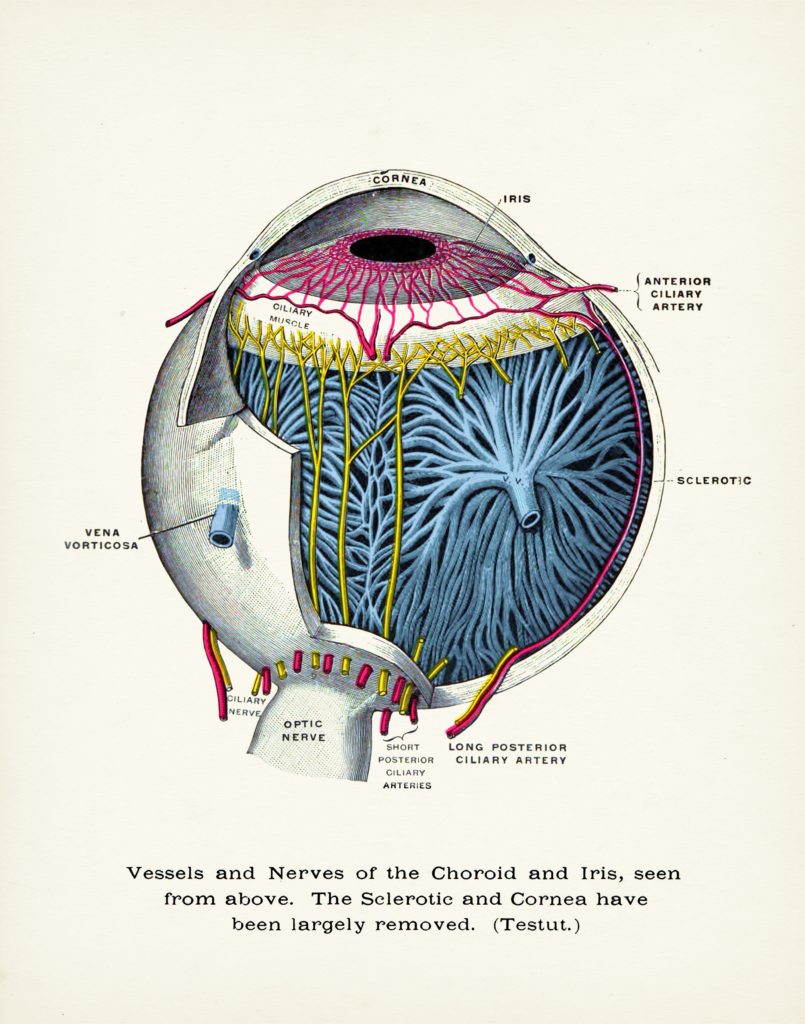 It might seem like an obvious question. Eyes are tiny; they allow us and our pets to see which seems pretty amazing, but seriously…what is so special about eyes that ophthalmologists study for twelve years (or more) just to diagnose and treat eye problems? Why is the study and treatment of eyes a specialty? Most people (and pets) probably don’t think too much about their eyes most of the time. They process, store and retrieve information from the eyes that requires significant thought, but they don’t think too much about the actual eye. That is, unless something goes wrong. Let’s say someone gets a hair in their eye or their vision is blurry one morning or flashes of light are seen for no reason. At that moment, that problem probably becomes a top priority and the person would contact an eye doctor right away. See (no pun intended), eyes are incredibly complex, requiring thousands and even millions of parts to be working in sync together at every moment for people and pets to see. Tens of thousands of scientific articles have been published on the cornea alone, the clear covering of the eye. The retina contains over 120 million rods and 6 million cones used for vision.
It might seem like an obvious question. Eyes are tiny; they allow us and our pets to see which seems pretty amazing, but seriously…what is so special about eyes that ophthalmologists study for twelve years (or more) just to diagnose and treat eye problems? Why is the study and treatment of eyes a specialty? Most people (and pets) probably don’t think too much about their eyes most of the time. They process, store and retrieve information from the eyes that requires significant thought, but they don’t think too much about the actual eye. That is, unless something goes wrong. Let’s say someone gets a hair in their eye or their vision is blurry one morning or flashes of light are seen for no reason. At that moment, that problem probably becomes a top priority and the person would contact an eye doctor right away. See (no pun intended), eyes are incredibly complex, requiring thousands and even millions of parts to be working in sync together at every moment for people and pets to see. Tens of thousands of scientific articles have been published on the cornea alone, the clear covering of the eye. The retina contains over 120 million rods and 6 million cones used for vision.
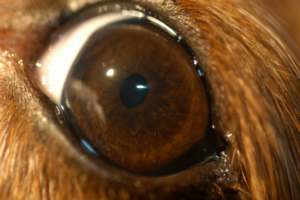
photograph of a normal dog eye
The eye is similar to our bodies, just on a very tiny scale. That’s why studying and treating the eye requires many years of study as well as different types of magnification. An eye examination (front and back of the eye) cannot be accurately performed without equipment that magnifies the parts of the eye to at least 10x, often requiring magnification up to 20x for critical evaluation. Looking at an eye without equipment would be similar to a doctor evaluating and treating a broken leg but not being able to get closer than a city block from the patient. Ophthalmologists must “get closer” to their patients with magnification and many specialized tools.
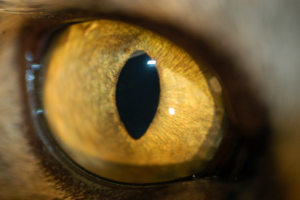
photograph of a normal cat eye
Similarly, treatment of eye conditions requires many specialized instruments and types of equipment. Ophthalmologists must train to know the eye like a physician knows the body, only the “body” we study is thousands of times smaller than a real body. For example, the suture used on the cornea is smaller than a human hair! We use 8 different types of machines and over 30 instruments to perform cataract surgery alone, just one type of eye surgery performed at Animal Eye Clinic.
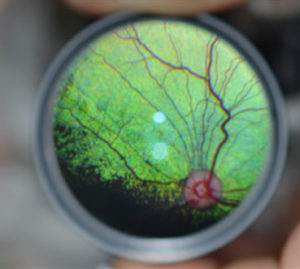
photograph of the back of a normal dog eye
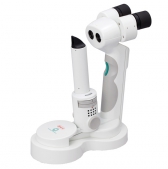
a photograph of a slit lamp, a biomicroscope used by veterinary ophthalmologists to examine the front of the eye
Pet and human eyes are truly incredible, unique structures that operate as a tiny “body.” That’s why human and veterinary ophthalmologists have so much education and training.
As always, we are happy to answer any questions you may have about our examinations and equipment! We would love to meet you and your pet! Learn more!
